January 15, 2024
The Benefits and Drawbacks of Virtual Staging With AI
Staged homes sell 88% faster and for 20% more than non-staged homes.
But if physical staging is still part of your process, it may be time to level up. Physical staging requires working with a company to rent furniture and decor to improve a home’s look and feel.
Each month, you pay the staging company a fee to rent the supplies you use for staging the property. At an average cost of $2,000 per month, this can get expensive quickly, especially for properties that take longer to sell.
So, what’s the alternative?
Virtual staging real estate allows for more speed, efficiency, and cost savings. In fact, you can reduce costs by an impressive 97% with virtual staging.
And AI takes things a step further. Let’s explore what virtual staging AI is and discuss its benefits and drawbacks in the real estate industry.
What Is Virtual Staging?
Virtual staging in real estate involves using software to style an empty room. A designer adds features such as art, furniture, and lighting to enhance ambiance.
How does virtual staging make a difference? Well, you don’t have the same limitations you get with traditional staging.
With physical staging, you have to consider certain costs, such as buying or renting furniture, paying for transport, and hiring professional stagers.
Plus, you also have to deal with a longer turnaround. Traditional staging requires coordination and logistics to transport, set up, and remove furniture and decor items.
But with virtual staging, you don’t have to worry about any of these challenges. You’ll experience lower costs, flexibility, and a shorter time frame.
However, there’s a difference between virtual staging with designers and virtual staging with artificial intelligence. Using AI levels up the virtual staging process.
How?
Picture this. You upload an image of an empty room. And within seconds, you see beautiful, realistic-looking furniture.
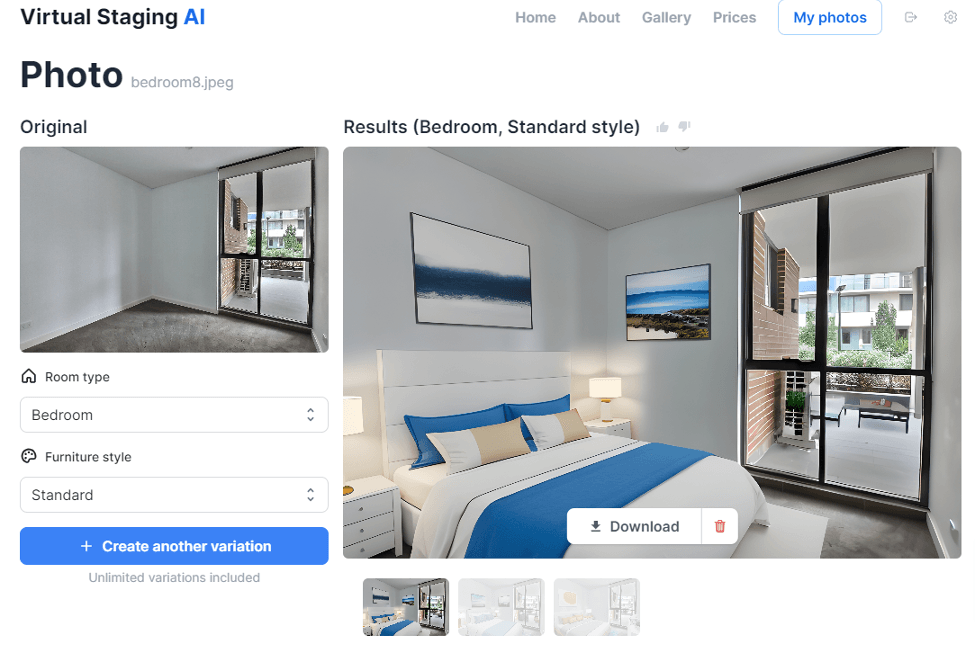
Render done with Virtual Staging AI
No more buying expensive furniture, art, and decor for staging homes.
No more waiting weeks to get a property ready. It can all be done with a click of a button.
Plus, you get more flexibility and customization when styling rooms. Unlimited renders allow you to get more designs within seconds. This feature removes the bottleneck of going back and forth with a designer when you’re unhappy with a particular design.
Types of Virtual Staging
There are different types of virtual staging: digital renderings and 3D modeling.
Digital Renderings
Digital renderings are computer-generated images or graphics that enhance and showcase a property’s interior or exterior.
This process involves creating realistic images or animations from digital data. Skilled designers use digital tools to manipulate and enhance images, like the one below. This process usually takes at least a day or two to complete.

On the other hand, AI-powered software can achieve virtually the same results in seconds using advanced technology to add furniture, decor, and other elements to empty spaces.
Compare the quality of the designer-generated image above to the AI-generated image below. Pretty similar, right?
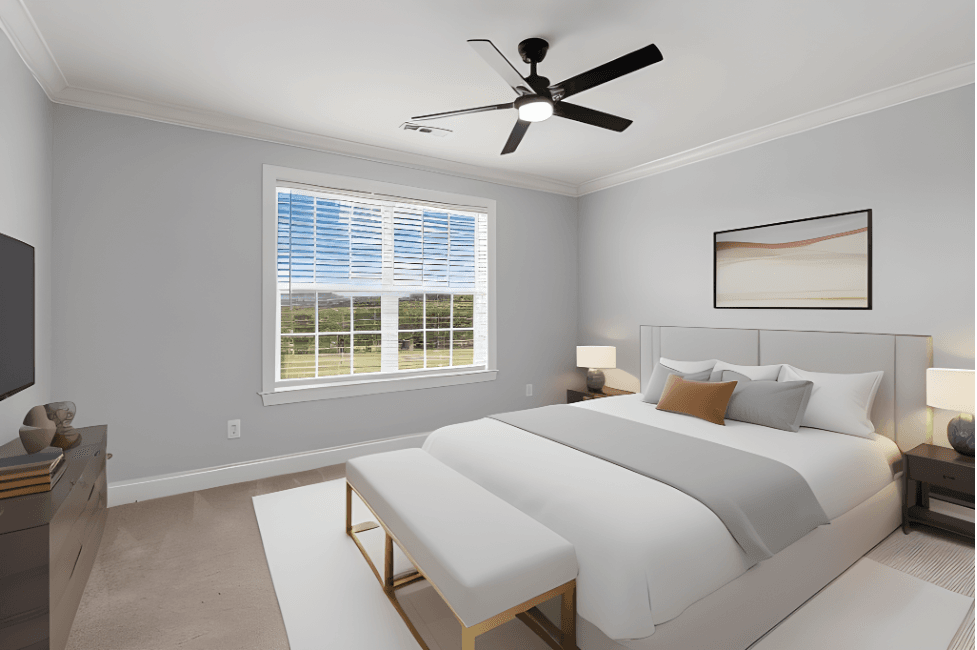
Render done with Virtual Staging AI
Using digital renderings in real estate marketing allows realtors to showcase the potential of a property and help buyers visualize the space. Adding furniture and decor portrays the space in the best light.
In other words, it helps potential buyers see the possibilities and envision how to use the area. If a room isn’t fully furnished, it can be difficult to see the potential of a room.
Digital renderings help bridge this gap by providing a clear and realistic view of how a property could look with different layouts and styles.
Before
After
Advantages of Virtual Staging With AI Over Virtual Staging With Graphic Designers
As mentioned, virtual staging with AI differs greatly from virtual staging with graphic designers. Using AI, you can quickly and easily stage properties.
It’s also more cost-effective, helping you increase ROI. Plus, you’ll benefit from faster turnaround times.
Cost Savings and Time Savings for Real Estate Agents and Photographers
Virtual staging with AI can save real estate agents a great deal of money because it eliminates the need for extensive manual labor.
You’re not paying for furniture, movers, shipping, professional stagers, or graphic designers.
Instead, you’re taking advantage of AI algorithms that can handle the staging process with minimal human intervention.
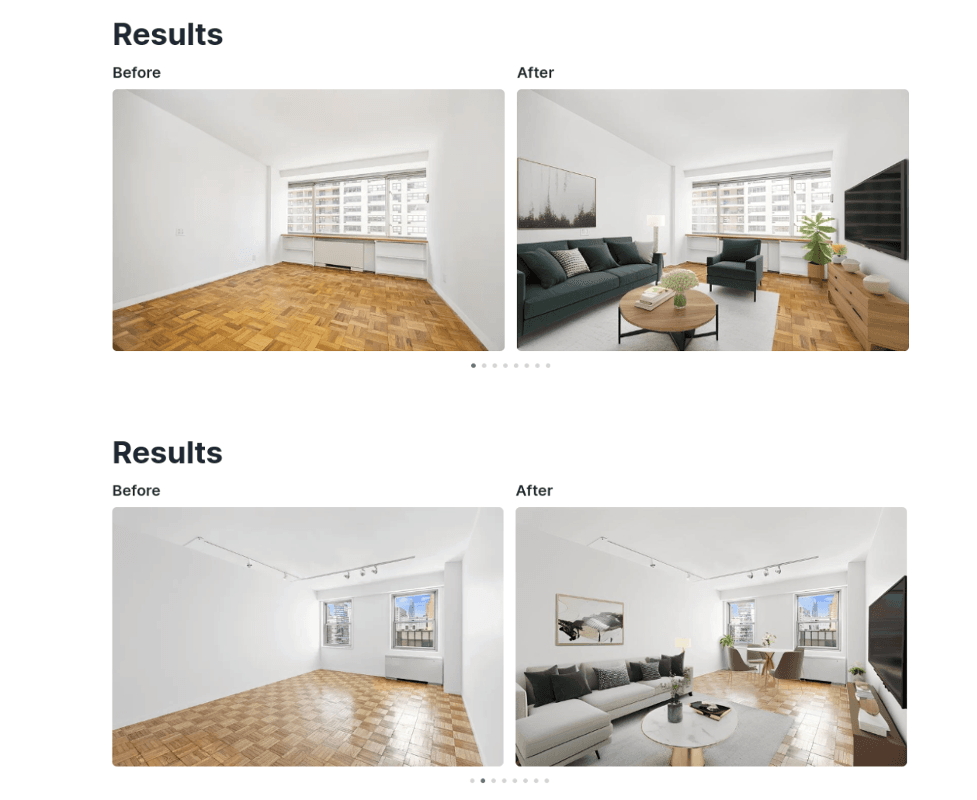
On the other hand, hiring graphic designers for virtual staging can cost more when you consider the time and expertise required to stage a property virtually.
Speed is another advantage of virtual staging with AI. You can upload images of a property and get digital interior renderings within seconds.
Traditional virtual staging with designers can take longer, especially if they have to digitally place each piece of furniture.
Real estate agents aren’t the only professionals who stand to gain from using AI-powered virtual staging. Professional photographers can use AI to eliminate the need for graphic designer freelancers when offering real estate photography services.
Adding a photography service for real estate professionals with the extra feature of virtually staging vacant rooms will also help distinguish you from competitors and attract more customers.
Plus, using Virtual Staging AI allows you to take advantage of state-of-the-art results at budget-friendly prices so your profit margin stays optimal.
The result? Lower costs, faster turnaround time, and increased ROI. What’s not to love?
Convenience and Simplicity
Virtual staging AI is an excellent option for anyone who wants to enhance property images but lacks advanced design skills. All you need is an internet connection.
Here’s what the process looks like:
-
Choose a virtual staging AI platform.
-
Upload property photos.
-
Choose room type and preferred style.
-
Get virtually staged pictures within seconds.
-
Don’t like the design? Get more within seconds.
Notice how none of those steps involved writing detailed instructions for a designer, waiting for the designer to complete the virtual staging process, or going back and forth about revisions.
Short and simple.
Disadvantages of Virtual Staging With AI Versus Virtual Staging With Designers
Virtual staging with AI brings unmistakable benefits to realtors and photographers. But that doesn’t mean it’s a perfect solution for everyone.
Fewer Design Styles Available to Potential Buyers
Virtual staging with designers allows real estate agents to explore or request a wide range of design options.
On the other hand, virtual staging with AI offers a limited number of room types and furniture styles.
But this is one small sacrifice to make when you can drastically reduce turnaround time and cost. Plus, there’ll be improvements in the future.
Buyers Can Feel Misled
Prospective buyers may have certain concerns about virtual staging. For example, they might feel like realtors are misleading them if the virtual staging makes the property look better than it actually is or if the virtual staging doesn’t accurately represent the physical space.
That’s why choosing high-quality virtual staging images that accurately depict the property is so important.
Quality Varies
The quality you get with some virtual staging services might vary, which can affect the overall effectiveness of the staging process.
Why? Some companies rely on designers to create the renders. Different designers have different levels of expertise. And the type of technology they use can impact the result.
So, if you want to use virtual staging, find a reputable company to ensure high-quality results.
At Virtual Staging AI, we eliminate this issue entirely. We use proprietary AI developed in Harvard Innovation Labs to produce the finest images without the risk of human error.
Factors to Consider When Choosing a Virtual Staging Company
Not all virtual staging companies are created equal. There are many things to consider when choosing the right partner.
Convenience
To get images of your property virtually staged, you can choose one of two paths:
-
Collaborate with a team and go back and forth through emails, Slack messages, and video calls with graphic designers until you get the images you want (and still pay through the nose to get them).
-
Use Virtual Staging AI from the comfort of your home or office and eliminate the hassle and extra expense.
Usually, added convenience costs more, but not here. Virtual Staging AI costs a fraction of virtual staging with graphic designers, and your results are remarkably similar in quality. What’s not to love?
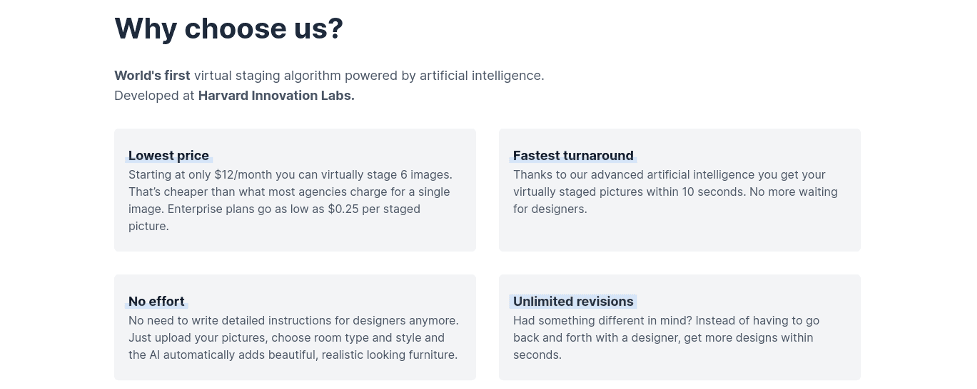
Costs Involved With Virtual Staging Services
The cost of virtual staging is another factor to consider.
Graphic designers often charge based on the number of images that need staging or the time they spend on the project (hourly rates). When using human designers and photographers, the cost can range between $30 and $150 per photo.
However, this can vary depending on factors such as the number of rooms staged, the amount of space covered, and the desired turnaround time for the images.
On the other hand, virtual staging with AI typically uses a subscription-based model. However, you can try Virtual Staging AI for free with no commitment. If you like the results, you can choose the best pricing plan for your budget.
Virtual Staging AI has four pricing plans. All plans come with unlimited renders, all room types and styles, no watermarks, and a 10-second turnaround.
Here’s the cost breakdown.
-
$12/month: 6 photos per month
-
$19/month: 25 photos per month, image storage forever
-
$39/month: 100 photos per month, image storage forever, 24/7 success manager
-
$69/month: 250 photos per month, image storage forever, 24/7 enterprise support with a personal success manager, API access
Our pricing differs from other staging companies because you get lots of flexibility. You can choose from plans that fit your unique needs.
Plus, there are no surprises. You know what you’re paying for before you sign up.
Turnaround Times
How long are you willing to wait for the virtual staging process to be complete?
We know time is always against you in real estate, and the last thing you want to do is delay a listing because of an extended turnaround time.
Consider how a single delayed image could snowball into missed deadlines and canceled appointments for professionals involved in selling a property.
-
Real estate agent - managing multiple listings and meeting deadlines
-
Marketers - keeping promotion schedules and advertising deadlines
-
Sellers - working to sell quickly and avoid holding costs, move to their next investment or living arrangement
-
Other professionals (like you) - managing multiple clients efficiently to maximize earnings and ROI
Here’s what the potential timeframe may look like for different types of staging:
-
Traditional staging: 2–4 weeks
-
Virtual staging with designers: 24–48 hours
-
Virtual Staging with AI: Seconds or minutes
Think of how much you (and these other professionals) could do with that much recovered time multiplied by the number of properties you handle each month.
Understanding the Limitations of Technology Used and Human Error
It’s important to consider the technology used in virtual staging. This includes factors that may affect the quality and accuracy of digital renderings and 3D modeling.
If you work with inexperienced designers, they may not have access to state-of-the-art technology.
The result may be unrealistic lighting, incorrect scale or perspective, and limitations in depicting textures and materials.
Developed in Harvard Innovation Labs, Virtual Staging AI’s proprietary technology creates high-quality, realistic digital renders that help you increase buyer interest, stand out from the competition, get higher offers, and sell properties faster.
Plus, we’ve never experienced an issue with low-resolution images, and any late-model smartphone (within the last 10 years) can take adequate photos for the AI to enhance.
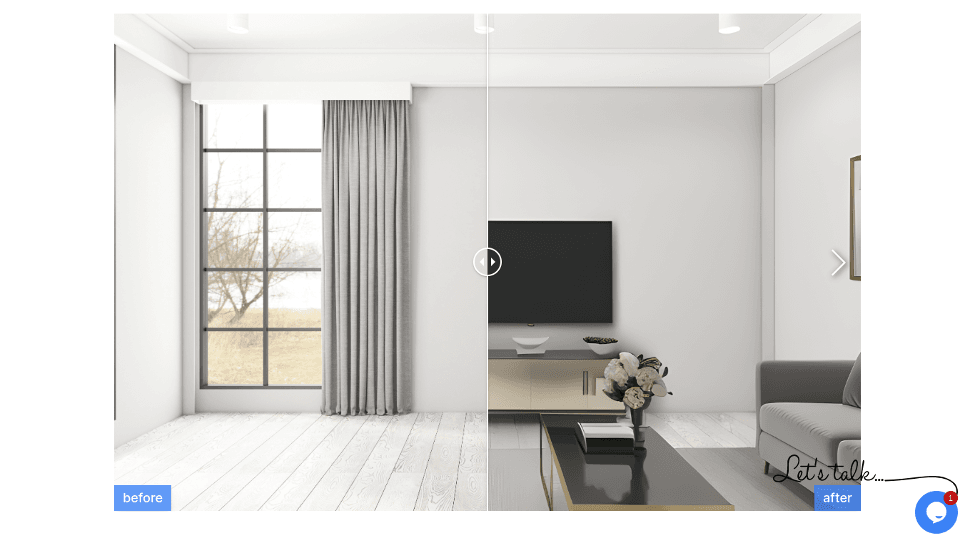
Next-Level Virtual Staging Is a Click Away
Artificial intelligence has the power to redefine how real estate agents approach virtual staging.
Features like faster turnaround times, quick revisions, no physical furniture costs, automated furniture placement, and convenience can reduce costs, save time, and increase ROI.
And the process couldn’t be easier. You just upload a photo of a room you want to stage, choose the type of room and furniture style, and within seconds, a perfectly staged room is ready for presentation.
Are you looking to level up your virtual staging? Try Virtual Staging AI for free.